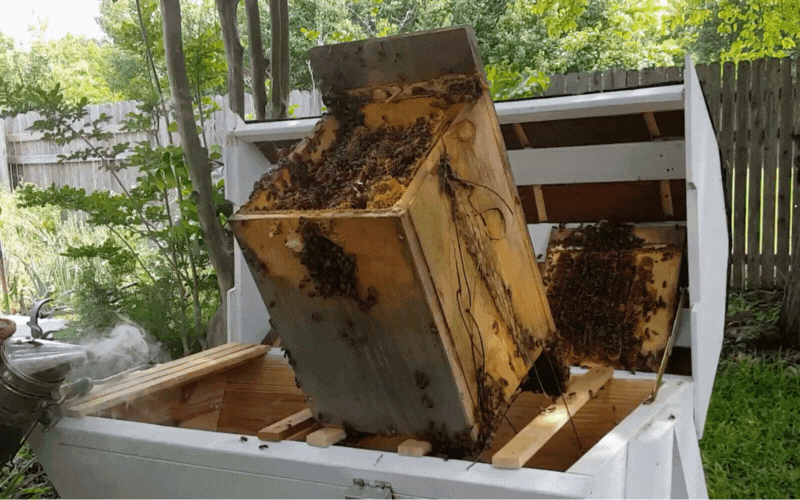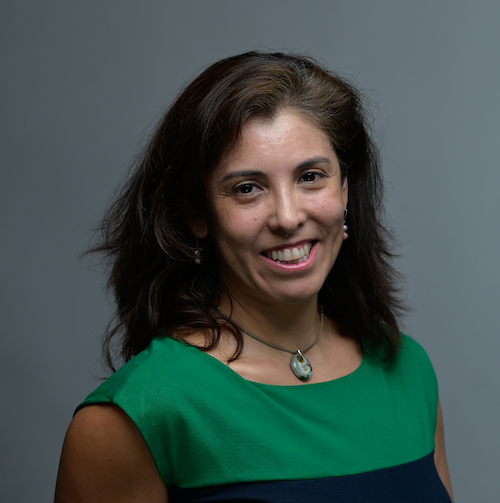Hive Photo Metadata Tracker
From Owl Box to Data Pipeline: A Beekeeper’s Digital Journey
Part 1: When Bees Meet Computer Vision
How an unexpected visitor in our backyard owl box led to years of photos, a lot of honey, and eventually a machine learning pipeline that can tell the difference between brood and breakfast.
The Problem: A Beautiful Mess

It started with a simple discovery: bees had moved into our backyard owl box without permission. Four years later, I had transformed from accidental beekeeper to honey harvester—and accumulated a digital disaster that would make any data scientist cringe.
The Reality Check:
- 📸 400+ photos, videos (~5GB) scattered across phones, computers, and cloud storage
- 📅 Zero consistent naming (favorites: “IMG_2847.jpg” and “abejas_queen_maybe.png”)
- 🏷️ No organization beyond vague folders like “summer bees?” and “inspection pics”
- 🤔 No way to track hive health, honey production, or seasonal patterns
📊 The Data Archaeology Challenge
When you’re knee-deep in managing actual bees, photo organization feels like a luxury. But as someone who professionally untangles messy datasets, I knew this chaos was hiding valuable insights:
- Temporal patterns: When do we actually inspect vs. when we think we do?
- Visual indicators: Can photos reveal hive health trends over time?
- Behavioral data: Do our documentation habits correlate with hive conditions?
The irony wasn’t lost on me—I help organizations make sense of their data for a living, yet my own beekeeping records were a disaster.
The Aha Moment: Hidden Structure in Chaos
Every digital photo contains metadata—timestamps, location data, camera settings. What if I could use this hidden information to reconstruct our beekeeping history without relying on my clearly unreliable memory?
The Hypothesis: Photo timestamps + clustering algorithms = automatic inspection timeline
🔧 Technical Approach
# Extract EXIF metadata from all photos
photo_metadata = extract_exif_data(photo_directory)
# Cluster photos taken within 4 hours as same inspection
inspection_groups = cluster_by_time(photo_metadata, threshold_hours=4)
# Result: Automatic reconstruction of inspection history
timeline = create_inspection_timeline(inspection_groups)
The beauty of this approach: it works retroactively on years of unorganized photos.
Our Beekeeping Timeline Emerges
Interactive timeline: Hover over points to see inspection details, photo counts, and notes
What the Data Revealed:
- 23 distinct inspections over 4 years (more consistent than expected!)
- Seasonal clustering: Heavy activity in spring/fall, regular summer checks
- Photo enthusiasm varies: 3-28 photos per inspection (outliers tell stories)
Enter the Machines: Teaching AI to See Hives
With our timeline established, the next question emerged: What can a computer actually see in a beehive photo?
I decided to run Google Cloud Vision API on our entire photo collection to test its limits. Could it distinguish honey from brood? Recognize individual bees? Detect the geometric patterns of healthy comb?
The Computer Vision Pipeline
Each photo gets analyzed through six different Vision API endpoints:
- Object Detection → Bounding boxes around bees, frames, equipment
- Label Classification → Categories like “honeybee,” “insect,” “food”
- Color Analysis → Dominant colors and pixel distributions
- Text Recognition → Dates or notes written on frames
- Pattern Detection → Geometric structures and textures
- Web Entity Matching → Similar images across the internet
🤖 Sample API Response Analysis
{
"labels": [
{"description": "Honeybee", "confidence": 0.94},
{"description": "Insect", "confidence": 0.87},
{"description": "Food", "confidence": 0.73}
],
"dominant_colors": [
{"color": {"red": 240, "green": 200, "blue": 100}, "pixel_fraction": 0.35},
{"color": {"red": 220, "green": 220, "blue": 220}, "pixel_fraction": 0.25}
],
"objects": [
{"name": "Insect", "confidence": 0.82, "bounding_box": [...]}
]
}
The raw API responses contain gold mines of structured data about our hives.
From API Responses to Beekeeping Intelligence
Raw computer vision results need translation into meaningful beekeeping insights. I developed heuristics to convert colors and patterns into hive component estimates:
The Translation Layer:
- 🍯 Honey Detection: Yellow/amber regions (RGB: R>200, G>150, B<100)
- 👶 Brood Areas: White/pale cells (RGB: R>200, G>200, B>200)
- 🕯️ Fresh Wax: Light yellow comb (RGB: R>230, G>200, B<150)
- 🐝 Bee Confidence: Aggregated scores from bee-related labels
The Questions That Emerged
Building the analysis pipeline revealed that I was asking the wrong questions. Instead of “How do I organize photos?”, the data led me toward much more interesting territory.
Question 1: Are We More Systematic Than We Feel?
Despite feeling like our inspection schedule was chaotic, the timeline revealed hidden patterns:
Emerging Patterns:
- Spring surge: 40% of inspections happen March-May (checking winter survival)
- Summer rhythm: Consistent monthly checks during active season
- Fall intensity: Preparation and harvest create inspection clusters
- Winter quiet: Minimal disturbance during cluster months
Question 2: Do Our Photo Habits Predict Hive Drama?
The number of photos per inspection varies dramatically—from quick 3-shot checks to extensive 28-photo documentation sessions. What drives this behavior?
Initial Observations:
- High photo sessions often coincide with interesting discoveries (queen sightings, swarm prep, unusual behavior)
- Low photo sessions typically represent routine “all looks good” checks
- Seasonal variation in documentation intensity suggests different priorities throughout the year
Question 3: What Does AI See That We Miss?
The computer vision results challenged my assumptions about what makes a “good” bee photo: Image being updated
Surprising Discoveries:
- Some photos I considered “bee-heavy” got low confidence scores
- Blurry photos sometimes yielded high-confidence honey detection
- The AI occasionally detected patterns I completely missed
- Lighting conditions dramatically affected all detection categories
📈 Sample Analysis Results
High Confidence Detection (Score: 0.94)
- Labels: “Honeybee”, “Insect”, “Food”
- Dominant colors: Golden honey tones
- Pattern detection: Hexagonal cell structure
- Human assessment: “Obviously a great bee photo”
Surprising High Confidence (Score: 0.87)
- Labels: “Hexagon”, “Pattern”, “Food”
- Dominant colors: Pale yellow, white
- Pattern detection: Strong geometric signals
- Human assessment: “Thought this was a boring empty comb shot”
The AI was detecting structural patterns I wasn’t consciously noticing.
The Technical Architecture
For fellow data scientists curious about implementation:
🔧 Complete Pipeline Overview
# 1. Photo Discovery & Metadata Extraction
photos = discover_photos(directories)
metadata = extract_exif_parallel(photos)
# 2. Temporal Clustering
inspections = cluster_by_timestamp(metadata, threshold_hours=4)
# 3. Vision API Analysis
for inspection in inspections:
for photo in inspection.photos:
api_results = analyze_with_vision_api(photo)
beekeeping_insights = translate_to_hive_metrics(api_results)
# 4. Aggregation & Analysis
timeline_data = aggregate_inspection_metrics(inspections)
patterns = detect_seasonal_trends(timeline_data)
# 5. Interactive Visualization
charts = generate_plotly_visualizations(timeline_data, patterns)
Key Technical Decisions:
- Clustering algorithm: DBSCAN with temporal distance metric
- API strategy: Batch processing with rate limiting and error handling
- Color analysis: RGB threshold-based heuristics with validation
- Visualization: Plotly for interactivity, static PNG fallbacks
The Beekeeping Intelligence Layer - A work in progress
Converting raw API responses into domain-specific insights is requiring combining computer vision with beekeeping knowledge, for now this is a skeleton of my approach and experiments will be updated here soon. For now…
🐝 Domain Expert System
def analyze_hive_health(vision_results):
"""Convert Vision API results to beekeeping insights"""
# Color-based component detection
honey_pixels = count_pixels_in_range(vision_results.colors, HONEY_RGB_RANGE)
brood_pixels = count_pixels_in_range(vision_results.colors, BROOD_RGB_RANGE)
# Confidence aggregation
bee_confidence = aggregate_bee_labels(vision_results.labels)
# Pattern recognition
comb_quality = detect_hexagonal_patterns(vision_results.shapes)
return HiveHealthMetrics(
honey_ratio=honey_pixels/total_pixels,
brood_activity=brood_pixels/total_pixels,
bee_presence_confidence=bee_confidence,
comb_structure_quality=comb_quality
)
This translation layer transforms generic computer vision into actionable beekeeping intelligence.
What’s Next: The Interactive Time Machine
Part 1 established the foundation—we can extract structure from chaos and teach machines to see hives. But the real magic happens when we can navigate through time and spot patterns across seasons and years.
Coming in Part 2: Building the Time Machine
- 🖱️ Interactive Timeline Navigation - Click through four years of inspections
- 🔍 Drill-Down Analysis - Examine individual photos with full AI analysis
- 📊 Trend Detection - Spot seasonal patterns and anomalies
- 🎯 Smart Filtering - Find inspections by date, photo count, or AI confidence
- 🤖 Automated Insights - Let the system flag interesting changes
Try It Yourself Preview
Want to test computer vision on your own photos? I’ve built a streamlined demo app:
🔗 Beehive Photo Analyzer - Upload any photo and see what the AI detects
The Bigger Picture: From Chaos to Insights
This project demonstrates core principles that apply far beyond beekeeping:
🔄 Retroactive Structure Discovery: Sometimes the best datasets already exist—they just need the right tools to reveal their structure.
🤖 API-Powered Analysis: Modern computer vision APIs can provide sophisticated analysis without building models from scratch.
📊 Domain Translation: Raw AI results become valuable when combined with subject matter expertise.
📈 Progressive Enhancement: Start with basic organization, then layer on advanced analysis as patterns emerge.
Whether you’re drowning in family photos, business documents, or research images, the same principles apply: metadata contains stories, clustering reveals patterns, and modern AI can see things humans miss.
Resources & Code
🐙 GitHub Repository: Complete analysis pipeline and visualization code is being re-written, previous version here
📊 Interactive Demo: Try the photo analyzer yourself
📝 Technical Deep-Dive: Jupyter notebook with full reproducible analysis - Coming soon here
🚀 Quick Start for Your Own Photos
# Clone the analysis pipeline
git clone https://github.com/dagny099/beehive-tracker
cd beehive-tracker
# Install dependencies
pip install -r requirements.txt
# Set up Google Cloud Vision API credentials
export GOOGLE_APPLICATION_CREDENTIALS="path/to/your-key.json"
# Run analysis on your photos
python analyze_photos.py --input-dir /path/to/photos --output timeline.html
# Open timeline.html in browser to explore results
What You’ll Need:
- Python 3.8+ environment
- Google Cloud Vision API account ($300 free credits available)
- Collection of photos with EXIF metadata
- Curiosity about what patterns might be hiding in your images
Next time: Building an interactive timeline that transforms four years of beekeeping chaos into explorable, clickable insights.
What stories are hiding in your photo collections? Share your ideas in the comments—I’d love to help you uncover the patterns in your visual data.
Barbara is a Certified Data Management Professional (CDMP) who discovered that the intersection of data science and beekeeping produces both honey and insights. Follow her journey at [barbhs.com] and try the photo analyzer at [hivetracker.barbhs.com].
